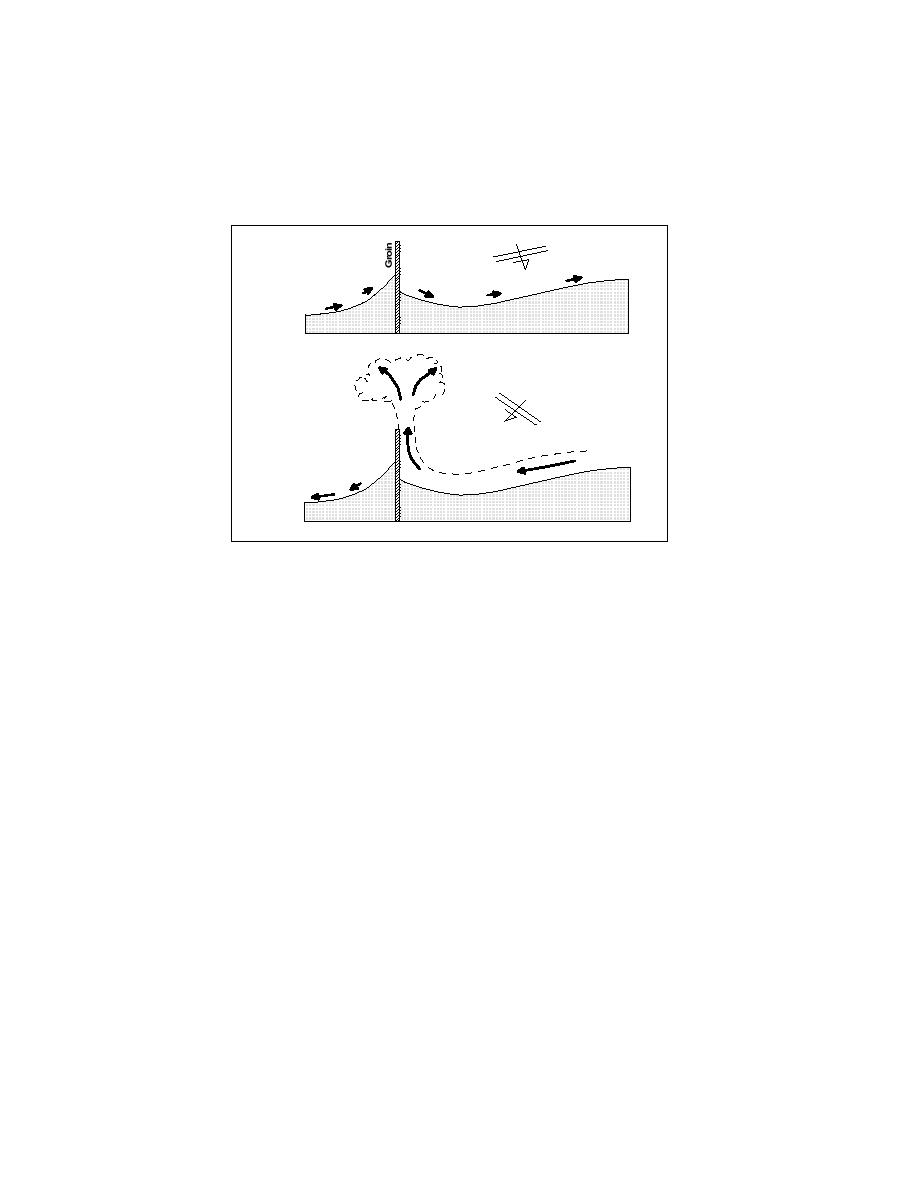
COASTAL ENGINEERING 2004
2621
Breaking Waves:1
a)
Beach
.
Breaking Waves:2
Rip Current
b)
.
Figure 1. Schematic illustration of rip current development near a groin due to changing wave
direction.
this rip current, sediment is transported offshore and may become, at least partly
and locally, lost from the nearshore system. The plan shape gradually
approaches a new equilibrium shape at which point the longshore as well the rip
transport approaches zero.
This transition plays a central role for the functioning of the groin (system).
Despite this, there are no design guidelines that take the variability of breaking
wave direction into account. This paper discusses the impact of changing wave
direction on shoreline evolution and associated offshore sediment losses through
the application of analytic solutions as well the numerical shoreline change
simulation model GENESIS. It is shown that 1) there is an inherent
morphodynamic time scale associated with groin compartments, 2) the offshore
losses are proportional to the offset between the forcing and the response, and 3)
losses are at a minimum when changes in the forcing are of the same temporal
scale as that of the response.
Shoreline change in the vicinity of disturbances that alter transport
alongshore is controlled by the gross transport rate as well as the net (Bodge,
1992). Kraus et al. (1994) investigated the functioning of a single groin as a
function the ratio of the net transport rate Qn to the gross Qg. The study showed
that the impoundment on the updrift side increases with the ratio Qn/Qg while



 Previous Page
Previous Page
